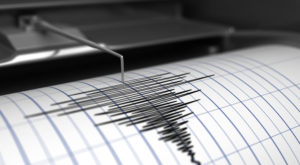 On Friday, November 30th, a magnitude 7.0 earthquake struck Alaska, approximately 10 miles northeast of Anchorage. Thankfully, the damage appears to be limited mainly to property loss, and a lot of that can be attributed to Alaska’s stringent building codes and standards.
On Friday, November 30th, a magnitude 7.0 earthquake struck Alaska, approximately 10 miles northeast of Anchorage. Thankfully, the damage appears to be limited mainly to property loss, and a lot of that can be attributed to Alaska’s stringent building codes and standards.
Alaska has more earthquakes than any other region of North America and is one of the most seismically active areas of the world. On March 27, 1964 (also a Friday), Alaska experienced a 9.2 magnitude earthquake, the largest earthquake in U.S. History, and the second-largest earthquake ever recorded. In that earthquake, Anchorage sustained heavy property damage: a reportedly estimated $2.3 billion in property losses in today’s dollars.
The 1964 tremble had some benefits for modern day inhabitants of Anchorage, mainly that it helped inspire stricter building codes. Alaska now uses some of the most stringent standards in the world, to help buildings withstand earthquakes like the one that struck Anchorage on Friday, November 30, 2018.
Alaska follows the International Building Code (“IBC”), considered to be the best available standard for seismic safety. The IBC requires buildings to be designed to resist possible ground motion determined by location and earthquake histories. It also requires that structural connections, such as beams and columns, be reinforced to resist damage from shaking.
In addition to strengthening the building codes, Alaska next required all engineers and architects registered in Alaska to demonstrate proficiency in seismic hazards or seismic engineering.
While an “Act of God” would typically not allow for subrogation recovery, certain circumstances relating to claims that would involve structural damage or require structural engineering should be investigated further, for subrogation potential. With such stringent codes and regulations, any substandard work should be studied to see if it meets the applicable building code or engineering standard, and if any deficiencies in that work contributed to causing the property damage.
Please also keep in mind that Alaska has a statute of repose for real property improvements that bars any claim ten years after date of completion of the work; therefore, any subrogation claim must be made prior to that time expiring.
An article on subrogating natural disasters can be found HERE, and a free MWL webinar entitled “Subrogating Against Acts of God” can be viewed HERE. Please contact Gary Wickert at gwickert@mwl-law.com if you have any questions regarding property damage, building codes, or engineering standards.






